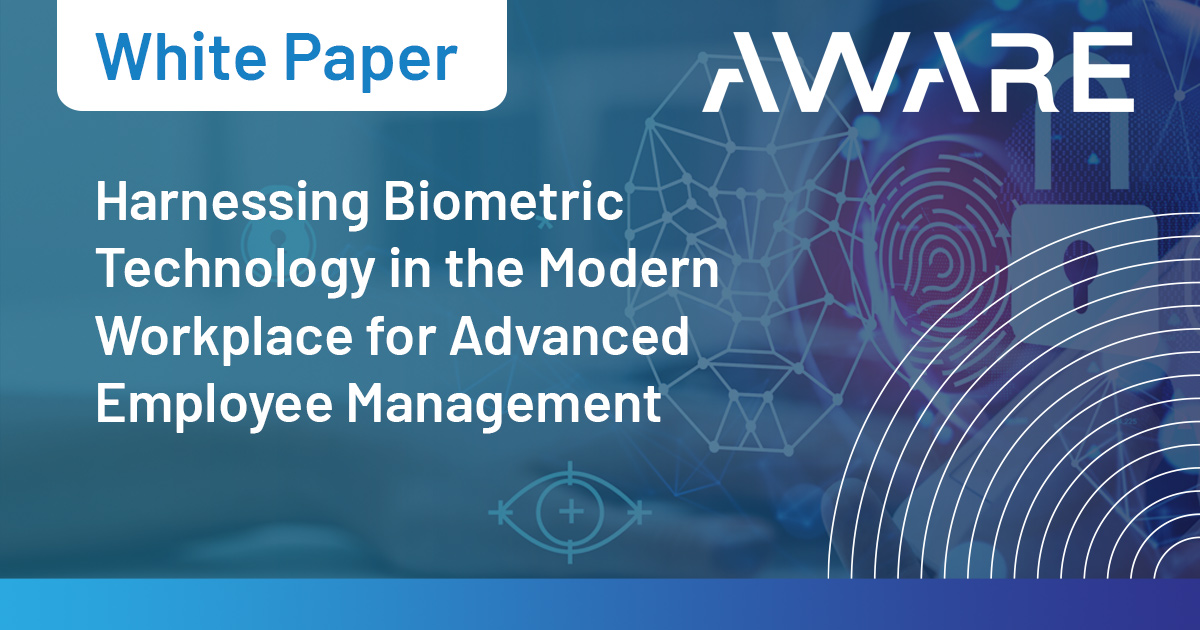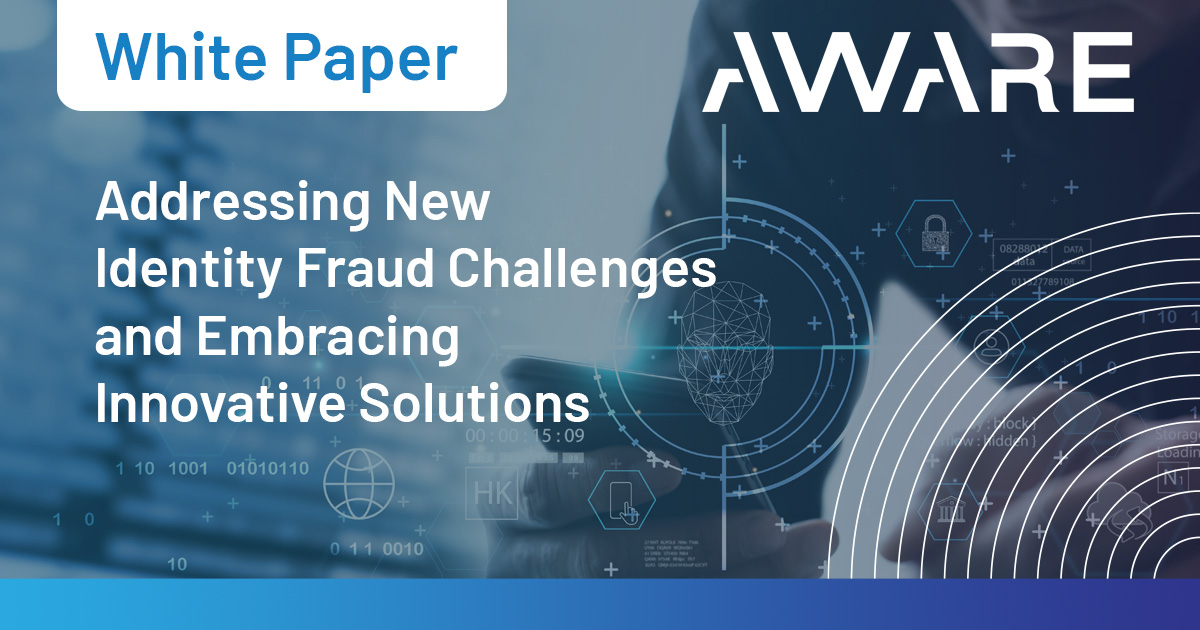Knomi® allows banking customers to use their mobile banking apps without using passwords.
Aware offers solutions for onboarding and user authentication on a mobile device using biometrics. Aware’s Knomi® mobile biometric authentication framework allows banking customers to use their mobile banking apps to apply for an account and then login to perform transactions without using passwords.
Secure and convenient passwordless authentication
Knomi® is a mobile biometric authentication solution comprised of a family of biometric matching and liveness detection algorithms that use face and voice to enable secure and convenient multifactor authentication without passwords.
Knomi can also be used for identity proofing as part of a mobile onboarding solution, with advanced security checks that authenticate driver’s licenses and passports, and spoof-resistant biometric facial matching between the live and printed images.
Knomi’s advanced presentation attack detection algorithms are essential for onboarding and authentication. They detect not only victim impersonation spoofs, but also identity concealment spoofs that impact the ability to use the facial images for other biometric identity proofing functions useful for onboarding such as watch list checks and duplicate prevention.
Features
Onboarding and KYC
New customers are a critical source of any bank’s revenue growth, so onboarding them efficiently is among the most important functions they can perform. But onboarding is also a time when banks are most vulnerable to fraud. Banks that incorporate Knomi into their onboarding process can leverage an applicant’s live selfie to conduct several identity checks that serve to positively verify their identity and to detect when fraud is being attempted.
Different versions of Knomi allow the process to be conducted either from the bank’s mobile app or alternatively via a web page on a mobile or desktop. A URL can be discovered by the applicant on the bank’s website, advertisement email, or banner ad. A potential customer simply clicks on the link from their mobile or desktop to initiate an application process in a browser, which includes capture of a live selfie. In this way, a biometrics-enhanced, browser-based process can simultaneously increase the security and reduce the friction of an onboarding process that doesn’t require an applicant to install a mobile app before applying.
Liveness detection serves several valuable purposes:
- Detection of attempted impersonations of a targeted victim using “spoofs” such as paper or digital photos, videos, or 2D and 3D masks;
- Detection of attempted identity concealment using a non-self, non-human, or partially obscured facial image to avoid future facial recognition-based search detection; and
- Non-repudiation, which is a term to describe a bank’s ability to collect court-admissible evidence that associates the activity of a fraudster to a real person; that is, prevent the fraudster from repudiating his involvement in a fraud attempt.
Liveness detection is also an essential part of these other security measures that rely on biometric matching and search:
- Facial image match-to-ID. This function, along with liveness detection, ensures that the government-issued identity document used to convey identity data is authentic and belongs to the applicant.
- Duplicate checks. Facial images of other customers are searched to ensure that the applicant is not attempting to surreptitiously hold multiple accounts, use a synthetic identity, or assume the identity of an existing account holder.
- Watch list checks. Databases of the facial images of known fraudsters are searched to ensure that the applicant is not a known fraudster.
- External bureau checks. Facial images can be submitted to external law enforcement bureaus to determine whether they have a criminal history.
Server-centric authentication
Biometric template storage and matching is performed on the server, with algorithms for autocapture, liveness detection, and spoof detection operating on both the device and on the server.


